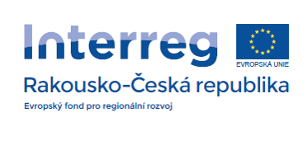 <<<
<<<
New research grants awarded
Assoc. Prof. Rudiger Ettrich was awarded a 4-years grant for investigating the Symmetric Allosteric Mechanism of Hexameric Escherichia coli Arginine Repressor using Computational Simulations (Czech Science Foundation 13-21053S).
Dr. Josef Lazar was awarded a 5-years grant to gain insights into protein structure from polarization fluorescence microscopy (Czech Science Foundation 13-10799S).
Prof. Ivo Safarik was awarded a 3-years grant for the study of magnetic composite materials for removal of pollutants (Czech Science Foundation 13-13709S, with co-applicant Prof. Jana Seidlerova from from the Technical University in Ostrava).
Dr. Babak Minofar will participate in a 4-years grant at his co-afffilation at the University of South Bohemia, Faculty of Sciences, "Počítačové modelování interakcí organické hmoty a biomolekul s minerálními povrchy" (Czech Science Foundation 13-08651S, awarded to Dr. Milan Predota, University of South Bohemia).
CONGRATULATIONS!!!!
Dr. Josef Lazar was awarded a 5-years grant to gain insights into protein structure from polarization fluorescence microscopy (Czech Science Foundation 13-10799S).
Prof. Ivo Safarik was awarded a 3-years grant for the study of magnetic composite materials for removal of pollutants (Czech Science Foundation 13-13709S, with co-applicant Prof. Jana Seidlerova from from the Technical University in Ostrava).
Dr. Babak Minofar will participate in a 4-years grant at his co-afffilation at the University of South Bohemia, Faculty of Sciences, "Počítačové modelování interakcí organické hmoty a biomolekul s minerálními povrchy" (Czech Science Foundation 13-08651S, awarded to Dr. Milan Predota, University of South Bohemia).
CONGRATULATIONS!!!!
Allostery is a manifestation of the global response of a macromolecule to ligand binding. The molecular origins of this fascinating emergent phenomenon have been a holy grail of biochemistry ever since Monod and Jacob named the concept. Arginine repressor (ArgR) is the master regulator of the arginine regulon in a wide variety of bacteria and provides feedback control over biosynthesis and catabolism of L-arg. Asymmetric allosteric activation of ArgR is an apparent paradox in view of the role of symmetry anticipated by the MWC model. Negative cooperativity was not anticipated by the model, but it might be physiologically useful because such different affinities create two action levels in the protein's response to L-arg. Assoc. Prof. Rudiger Ettrich was awarded a 4-years grant for the interpretation of this complex system, which requires an understanding of the protein's conformational landscape. Molecular dynamics simulations, umbrella sampling, QM/MM calculations, ligand docking and in silico mutations will be used to provide a picture of populated conformations and to elucidate the detailed molecular mechanism for ArgR allostery.
Optical properties of fluorescent proteins (FPs) are anisotropic. This fact can be used to develop a broad range of genetically encoded probes of biological processes. In principle, FP anisotropy (through polarization microscopy) can also provide information about protein structure, in living cells. This possibility, however, remains unexplored. Dr. Josef Lazar was awarded a 5-years grant to fill this gap by testing the hypothesis that polarization microscopy can be used to determine the orientation of an FP with respect to other parts of a fusion protein. In order to achieve this goal, we will: 1) determine orientation of transition dipole moments (TDMs) with respect to the cell membrane in FP-labeled membrane proteins; 2) determine TDM direction in molecules of representative FPs; and 3) determine orientation of the FP moiety in several membrane protein constructs and compare the results with available structural data. The results will provide fundamental information about FPs, allow improvements in genetically encoded fluorescent probes, and yield new tools for obtaining protein structure information.
Prof. Ivo Safarik and Dr. Mirka Safarikova was awarded a 3-years grant to focus on the preparation and characterization of new types of magnetic composite materials applicable as adsorbents for the separation of selected organic and inorganic pollutants and cells from water. Complex characterization of magnetic composite adsorbents will be performed using modern instrumentation techniques. The subsequent experiments will be focused on the comprehensive study of adsorption of important inorganic cations and anions, and persistent organic compounds and microbial cells from model solutions and samples containing mixtures of pollutants and accompanying contaminants. Experimental data will be used for the formation of adsorption isotherms and for the creation of a kinetic model which allows description and prediction of adsorption kinetics for various initial concentration values of pollutants.



